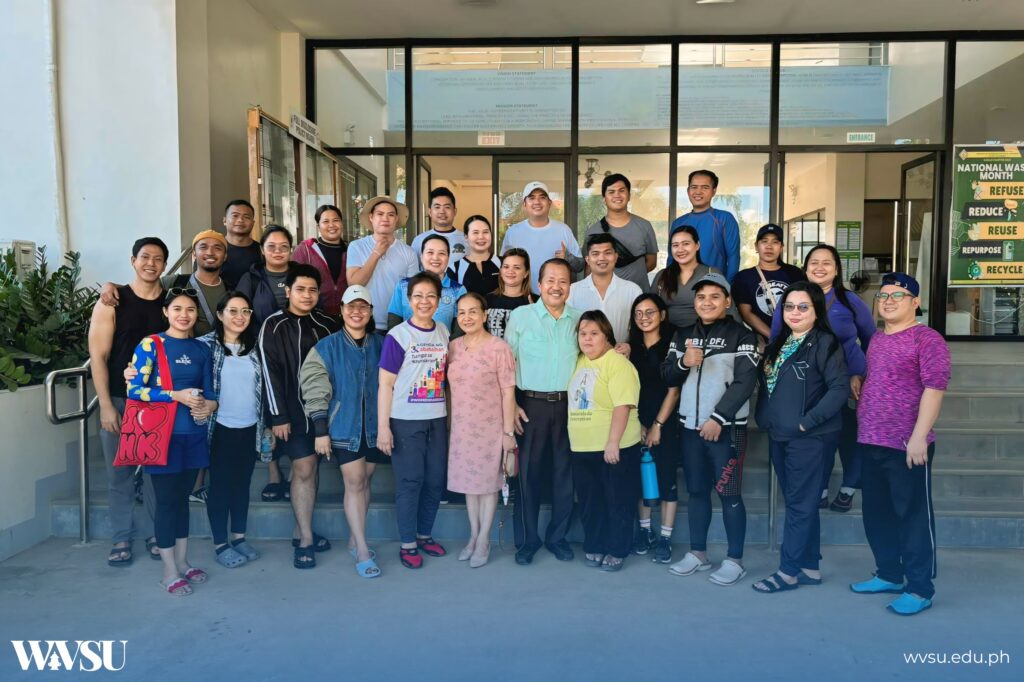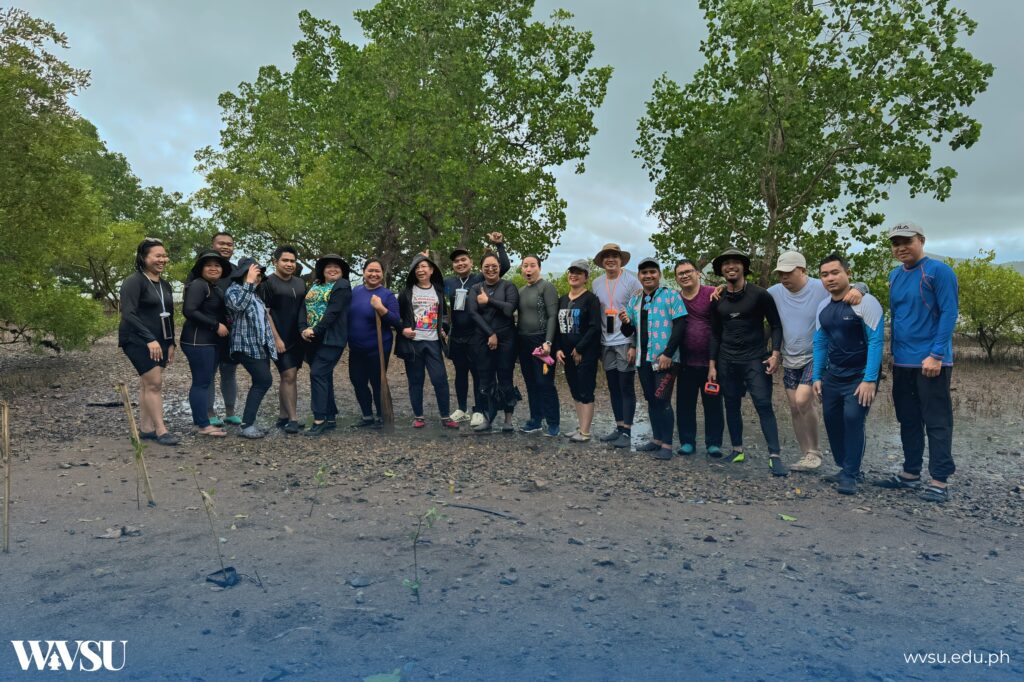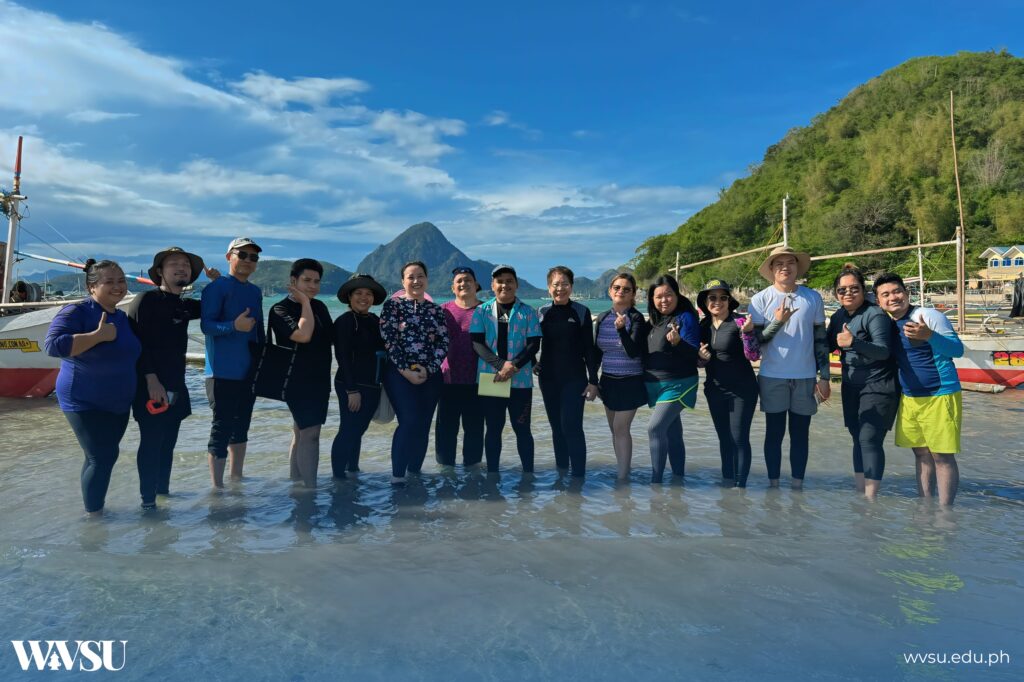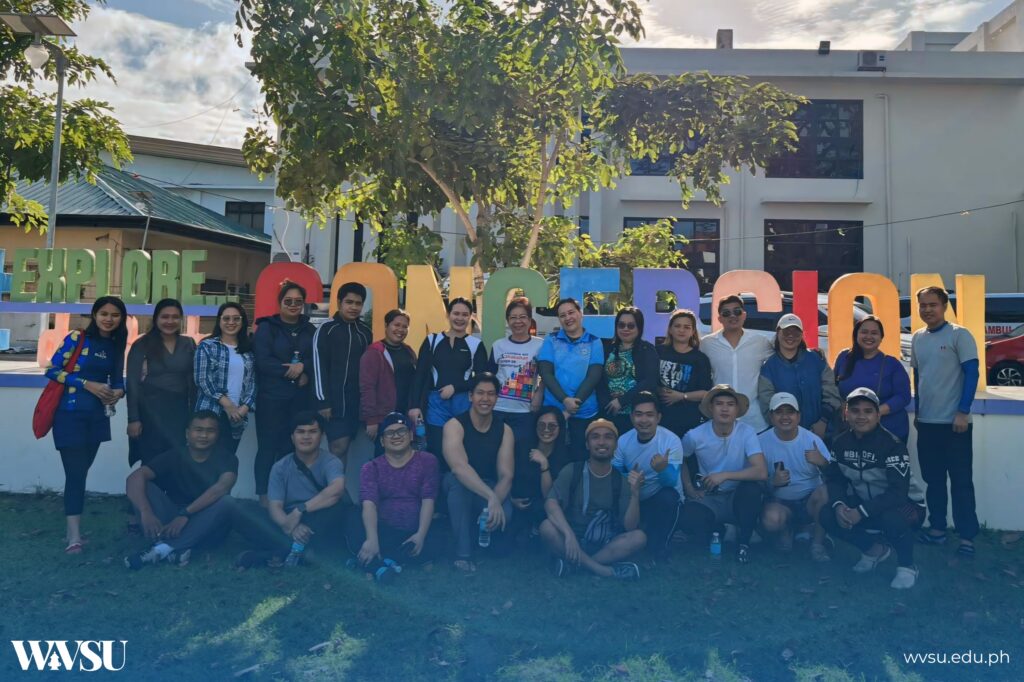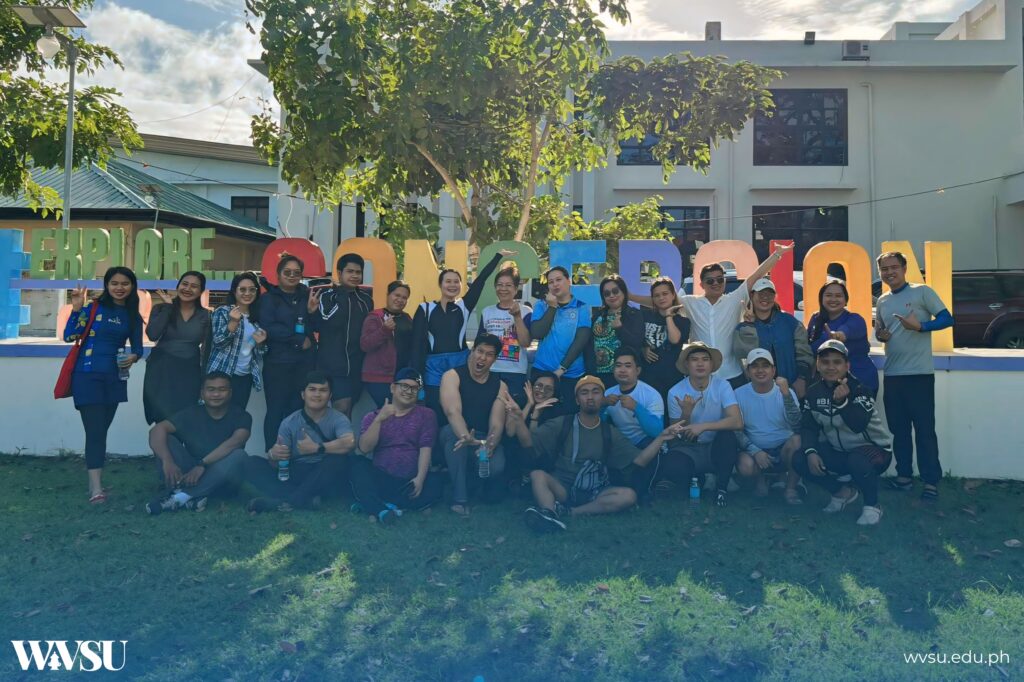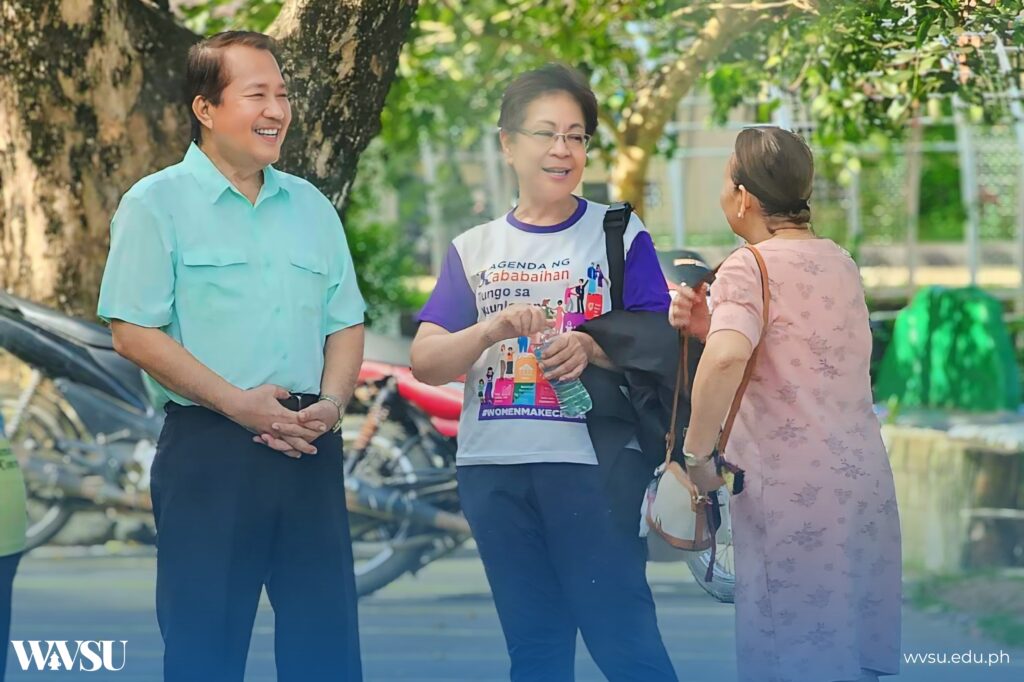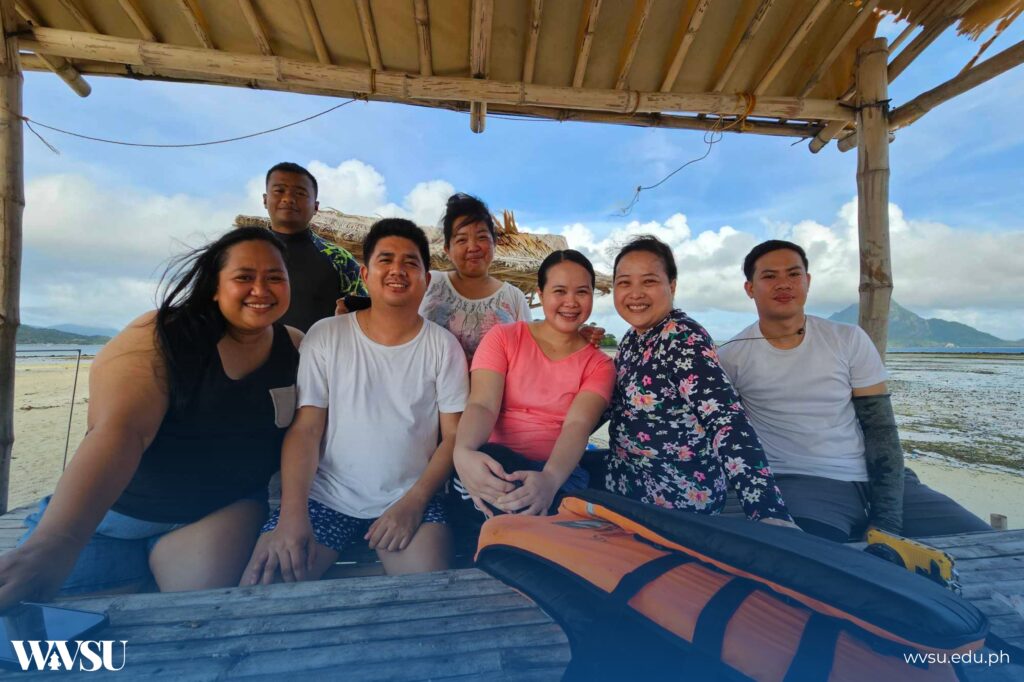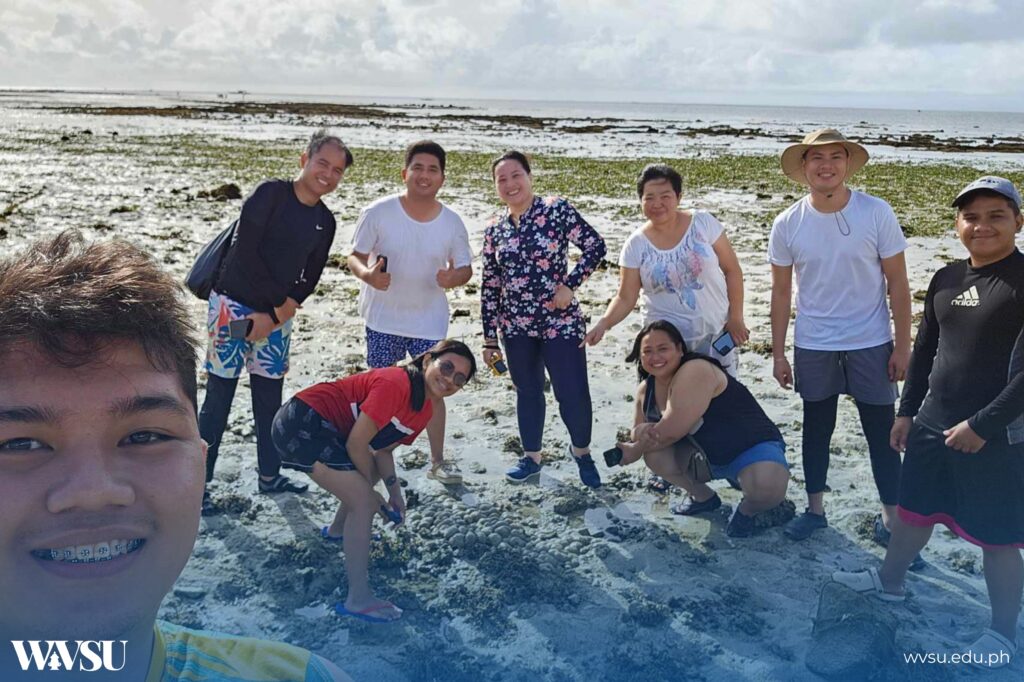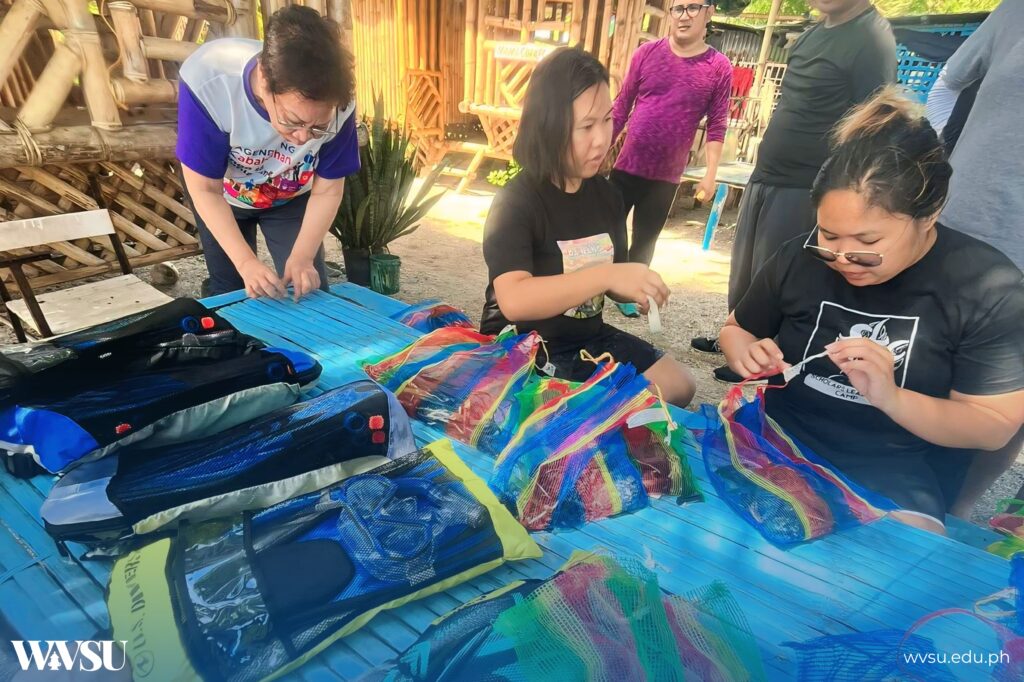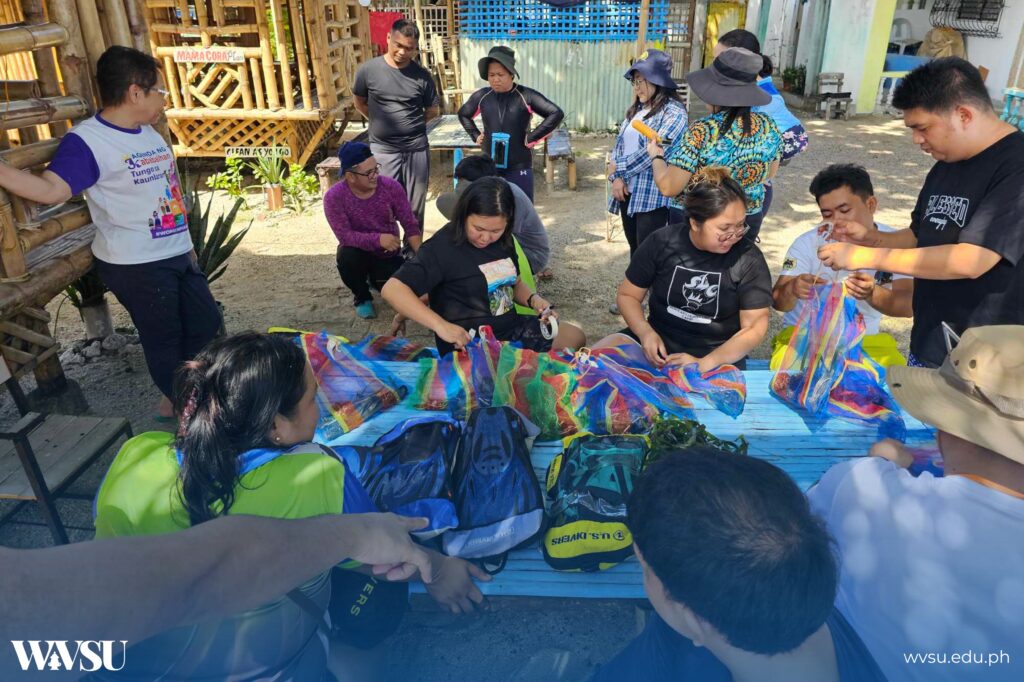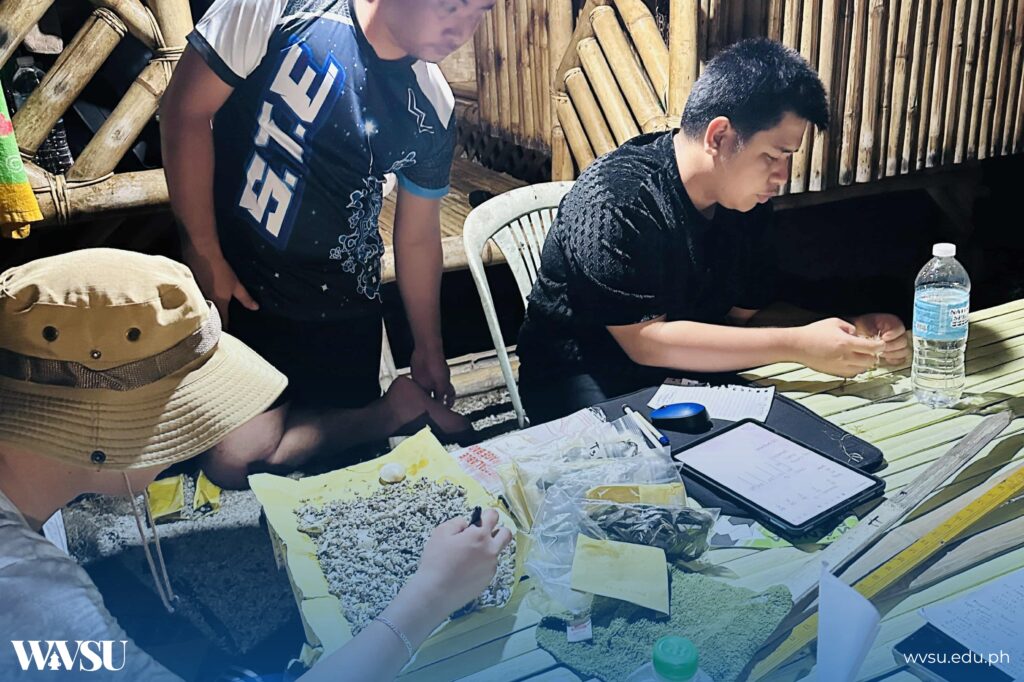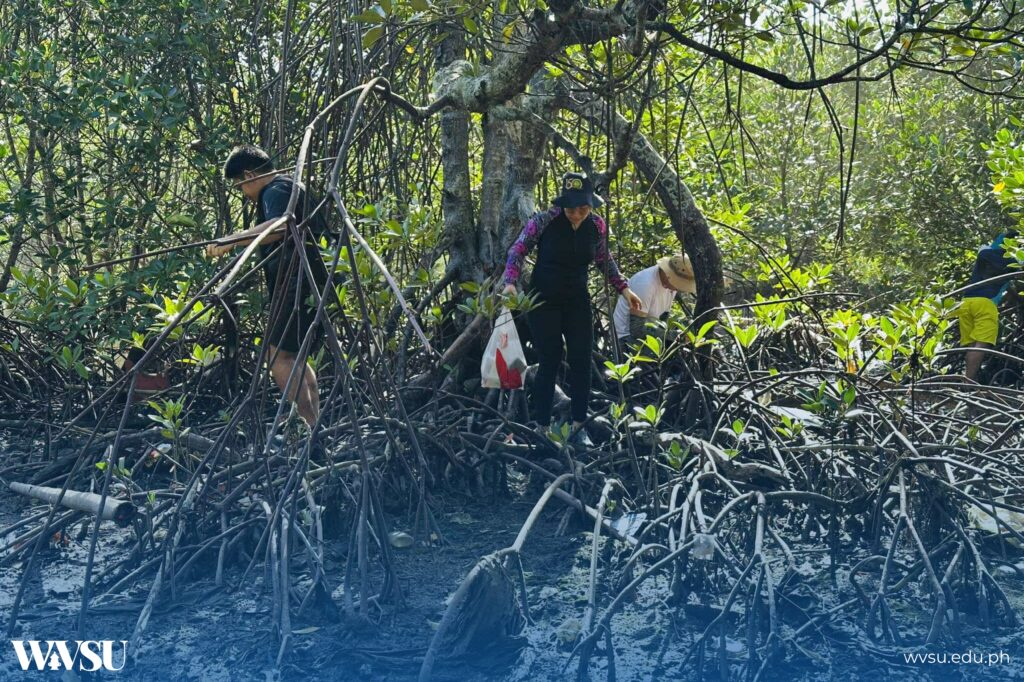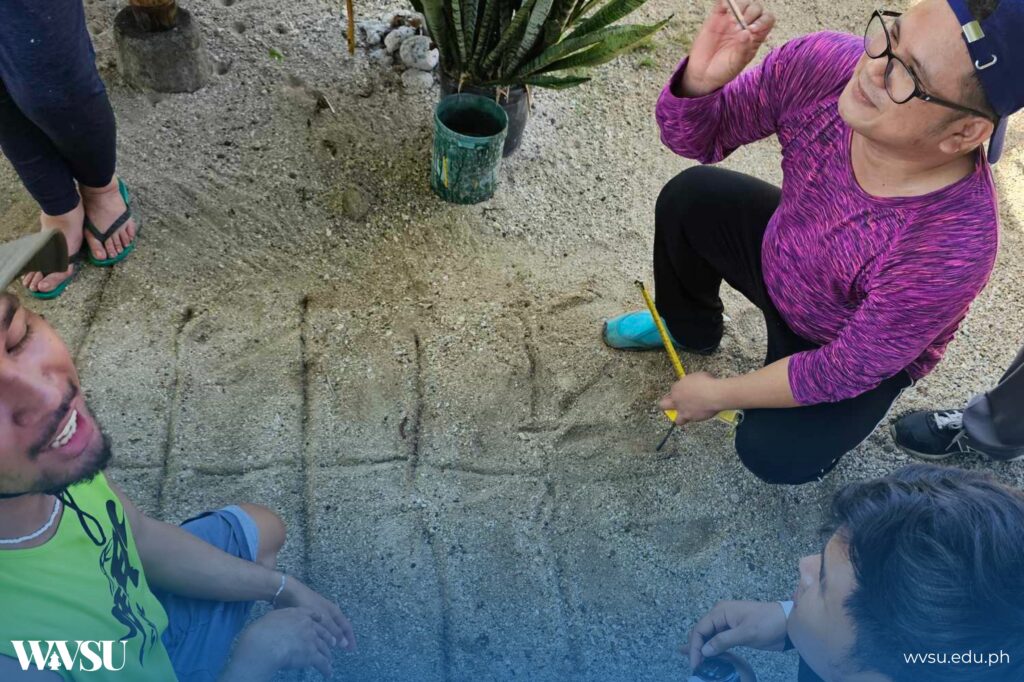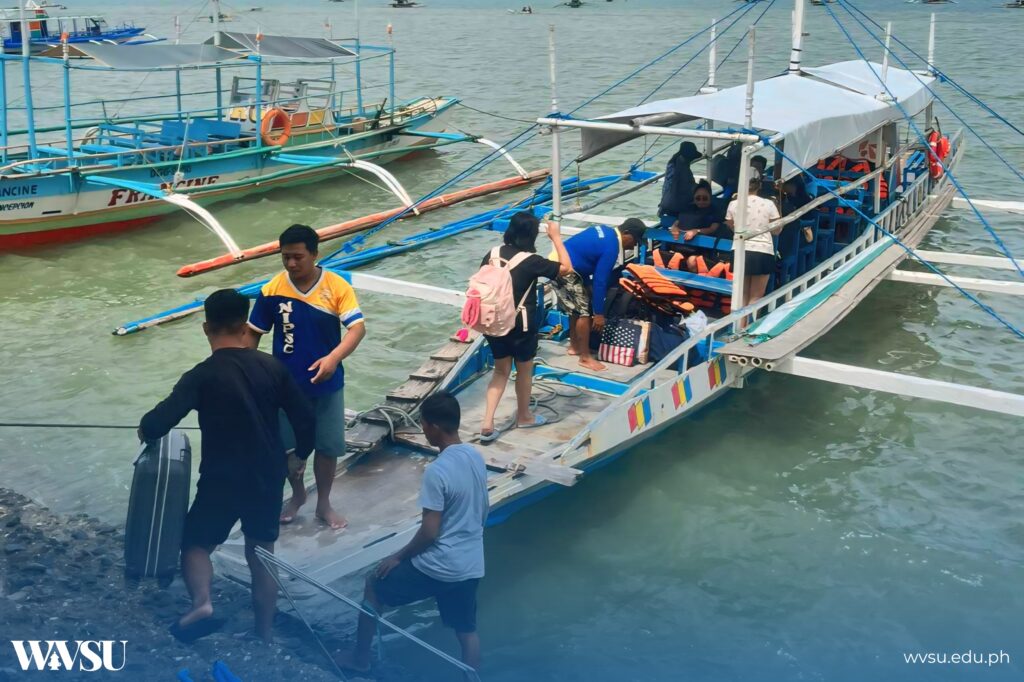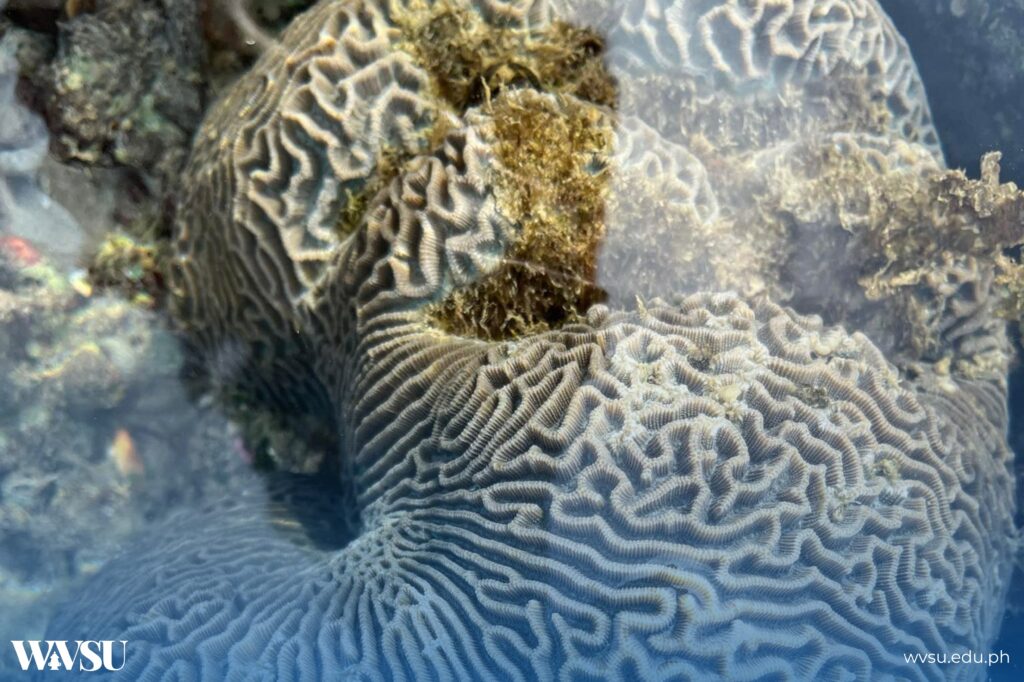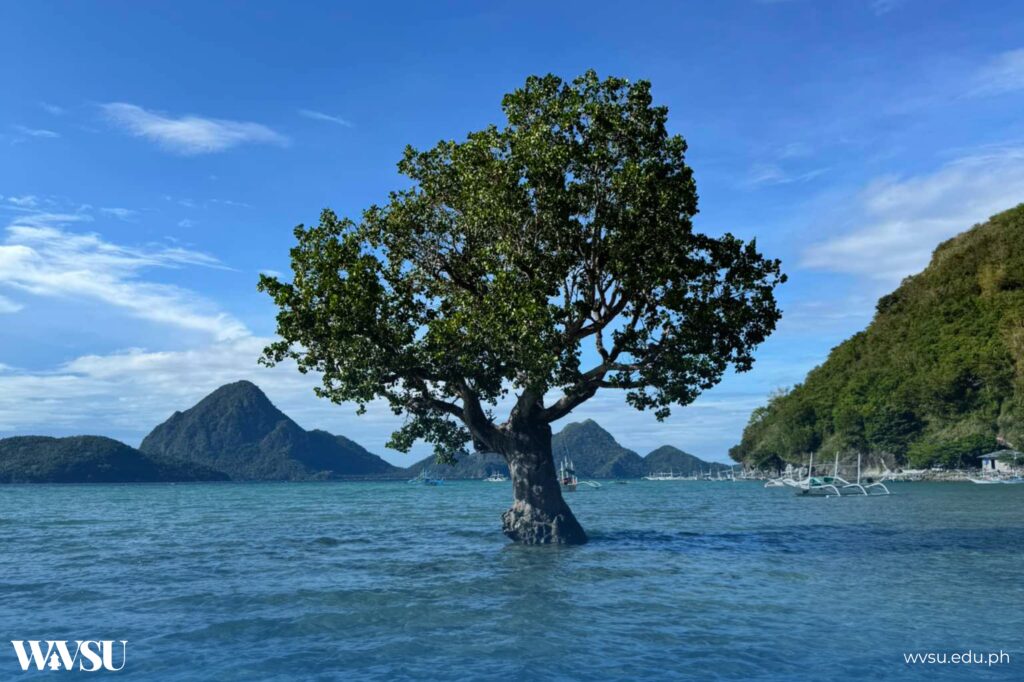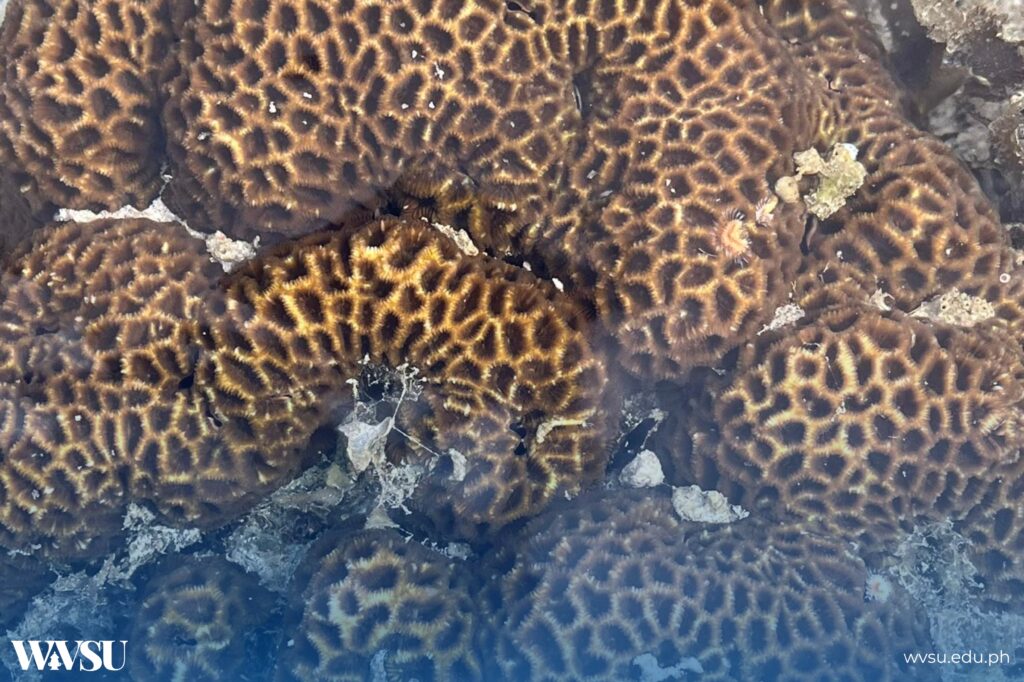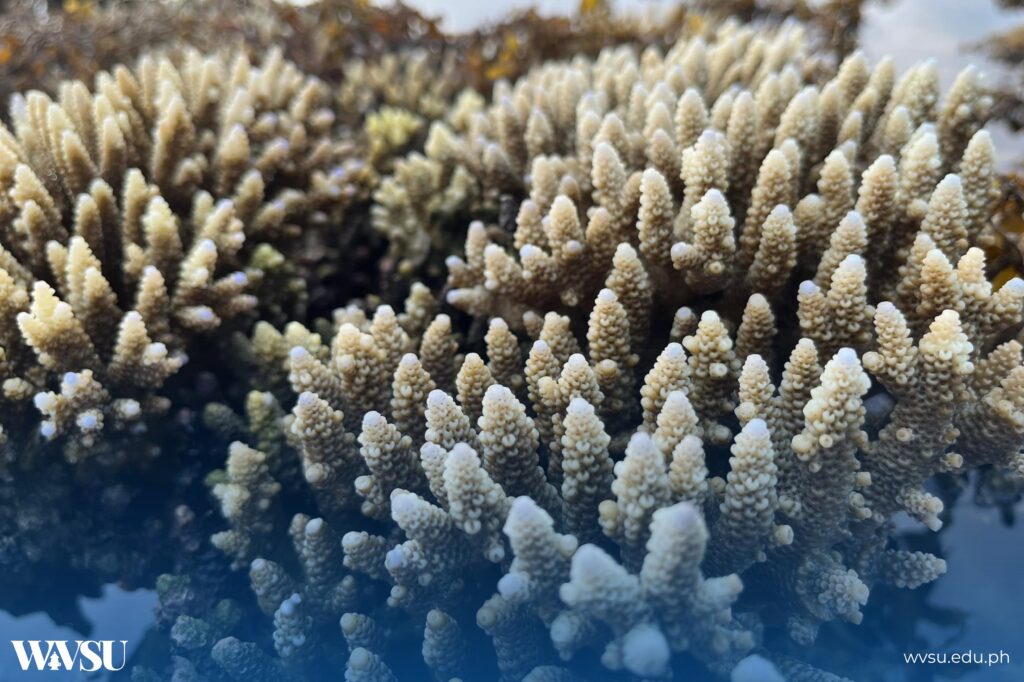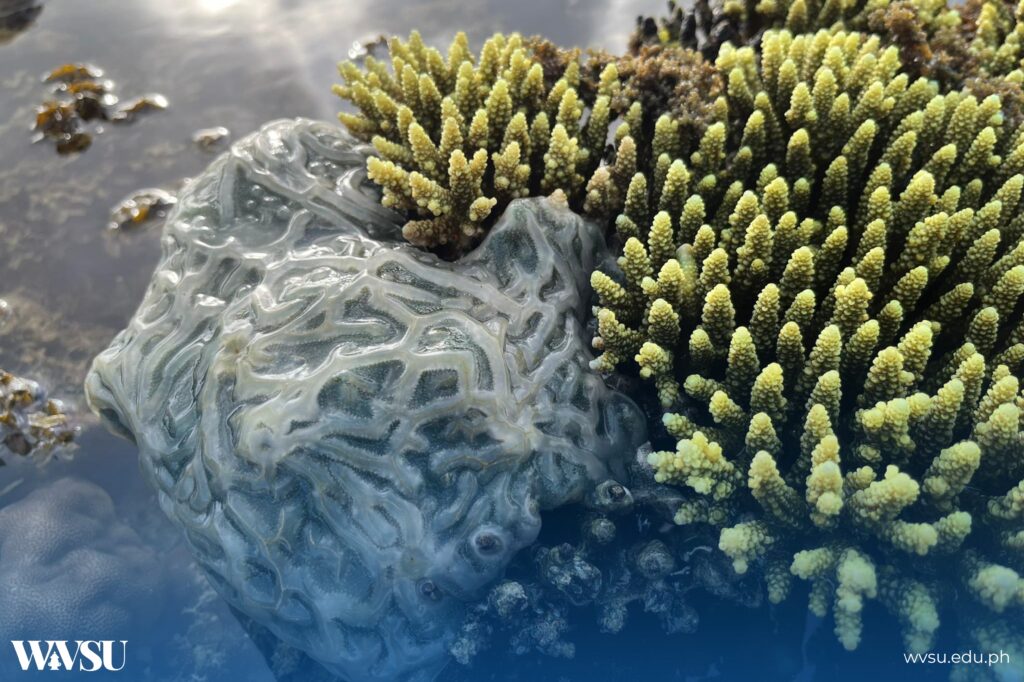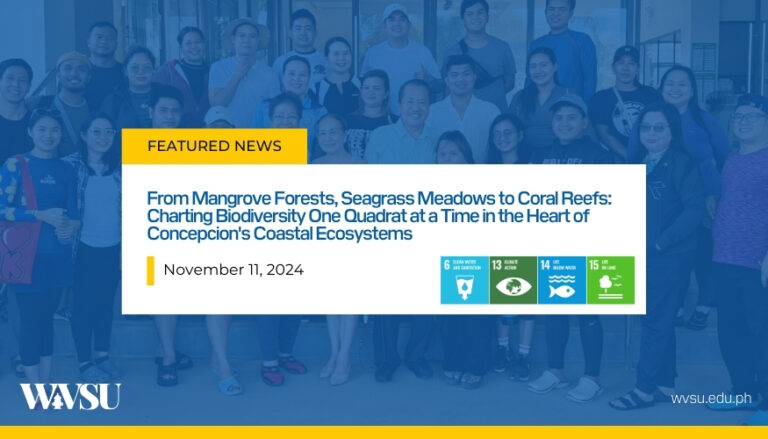Ph.D. Science Education major in Biology students from West Visayas State University-La Paz conducted an extensive three-part field study focused on assessing the health and biodiversity of mangrove, seagrass, and coral ecosystems in the Municipality of Concepcion, Iloilo, on Nov. 3-4, 2024. This activity is part of their course, SCI 629: Advanced Marine Ecology, under the guidance of Dr. Josette T. Biyo.
The first part of the study, titled “Assessment of Mangrove Community Structure in Two Study Areas of Concepcion, Iloilo, Philippines,” aimed to describe and compare the ecological framework of two distinct sites: Brgy. Bacjawan Sur and Sitio Pasil, Brgy. Malangabang coastal areas. The research team collected data on species composition, species density, regeneration rates, ambient parameters, cohabiting organisms, and human impacts in these areas.
The second part, “Community Structure of the Seagrass Ecosystem in the Intertidal Zones of Concepcion, Iloilo,” explored the ecological characteristics of seagrass beds in the same sites by measuring parameters such as species composition, species density, biomass, presence of epiphytes, and human-induced disturbances.
Finally, the third part, “Biodiversity Assessment of Coral Reefs Regenerated a Decade After Typhoon Yolanda Destruction at Malangabang, Concepcion, Iloilo, Philippines,” evaluated coral regeneration in terms of hard and soft coral composition, recruitment, percent cover, and the health of the coral reef ecosystem, considering both keystone and harmful species, as well as economically valuable invertebrates.
In the first activity, participants used the quadrat sampling method (10 m x 10 m) in five sampling sites to obtain a representative ecological survey of mangrove biodiversity in the study sites. The findings indicated greater diversity of mangrove species in Sitio Pasil, Brgy. Malangabang, an island setting, compared to Brgy. Bacjawan Sur on the mainland. Prominent species included Rhizophora apiculata, Avicennia marina, and Sonneratia alba. Other notable organisms observed in the mangrove area included periwinkle snails, hermit crabs, fire ants, egrets, and ruddy turnstones. The contrast in species density and regeneration between the two sites provides insights into the differing ecological pressures and conditions on the island versus the mainland, informing conservation strategies for each habitat.
In the second activity, researchers employed the random core sampling technique with a total of 25 replicates to assess seagrass ecosystems. The results revealed that Brgy. Malangabang had richer seagrass biodiversity, with species such as Enhalus acoroides, Halodule uninervis, and Halophila ovalis thriving in the intertidal zones, while only Enhalus acoroides was present in Brgy. Bacjawan Sur. The significant variation in species composition and density between the two sites emphasizes the need for localized management efforts that account for site-specific ecological dynamics, especially given the environmental pressures that can impact the resilience of these vital ecosystems.
The third activity employed quadrat sampling (1 m x 1 m) along a 50 m transect line in five locations to analyze coral reef biodiversity. Data indicated that the coral reefs in Sitio Malangabang support an abundant variety of species, including Brain coral (Leptoria), Moon coral (Acanthastrea), Staghorn coral (Acropora), Plate coral (Montipora capricornis), Green horn coral (Hydnophora), and Leather coral (Sarcophyton). The presence of corallivores like Drupella snails and sea urchins (Diadema setosum), which can damage reef structures, highlights the challenges these reefs face as they recover from the impacts of Typhoon Yolanda. During the study, participants also interviewed locals to better understand human activities that affect these ecosystems. Key disturbances included aquaculture, agriculture, conversion of mangrove forests into residential land, wastewater discharge, and plastic pollution.
This field study underscores the delicate balance of these coastal ecosystems and the pressing need for effective conservation strategies. With increasing anthropogenic pressures, sustainable management and community engagement are critical to preserving the biodiversity and ecological functions of mangroves, seagrasses, and coral reefs in Concepcion, Iloilo. The findings call for collaborative action among local stakeholders, conservationists, and policymakers to protect these ecosystems, which are invaluable to both biodiversity and the livelihood of coastal communities.
The researchers would like to express their heartfelt gratitude to everyone who contributed to the success of their field study. They sincerely appreciate the warm welcome and support extended by Mayor Milliard Villanueva. They also wish to acknowledge Mr. Mark Rufino, CRMO-DA, and Ms. Je Johann Velasco, DA representative, for their invaluable cooperation.
